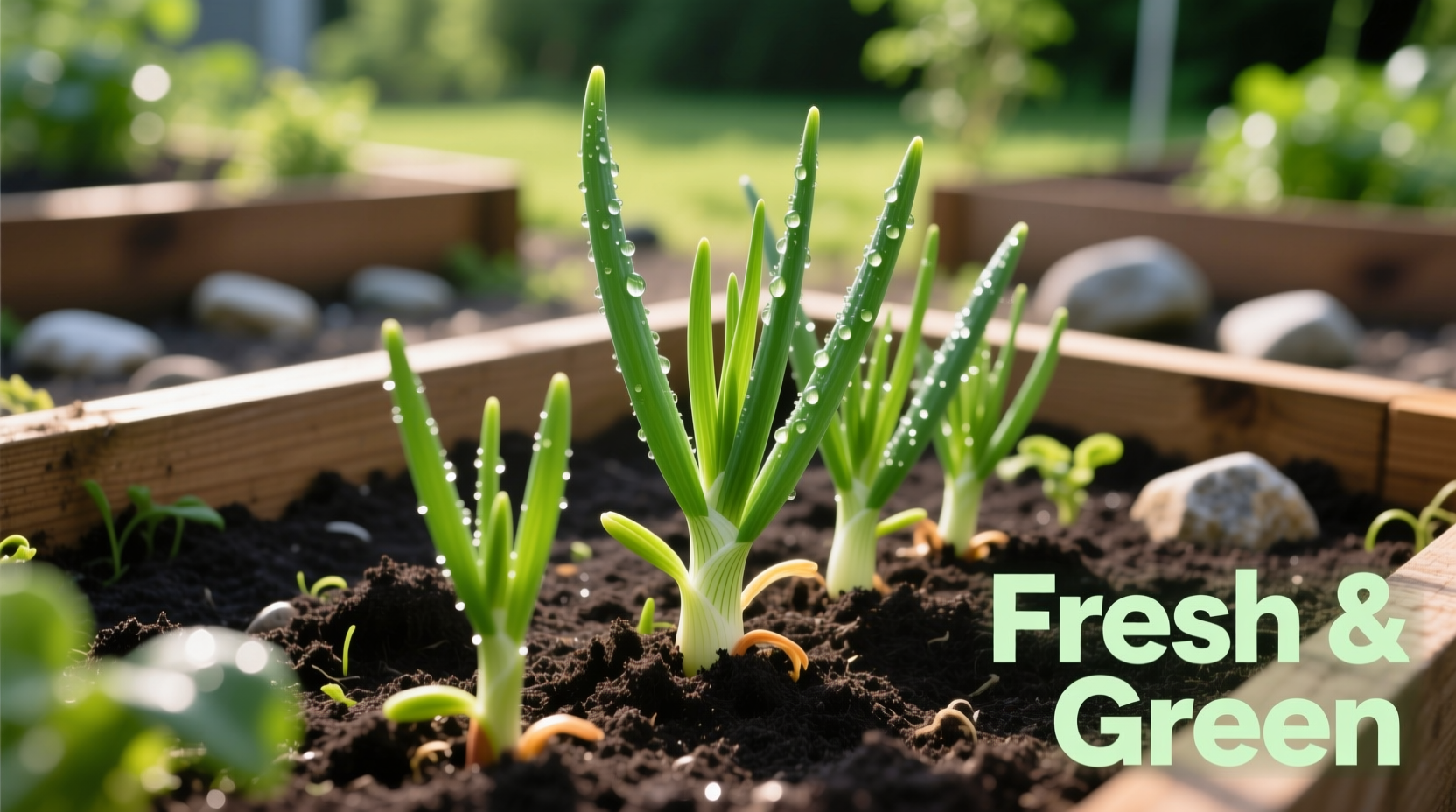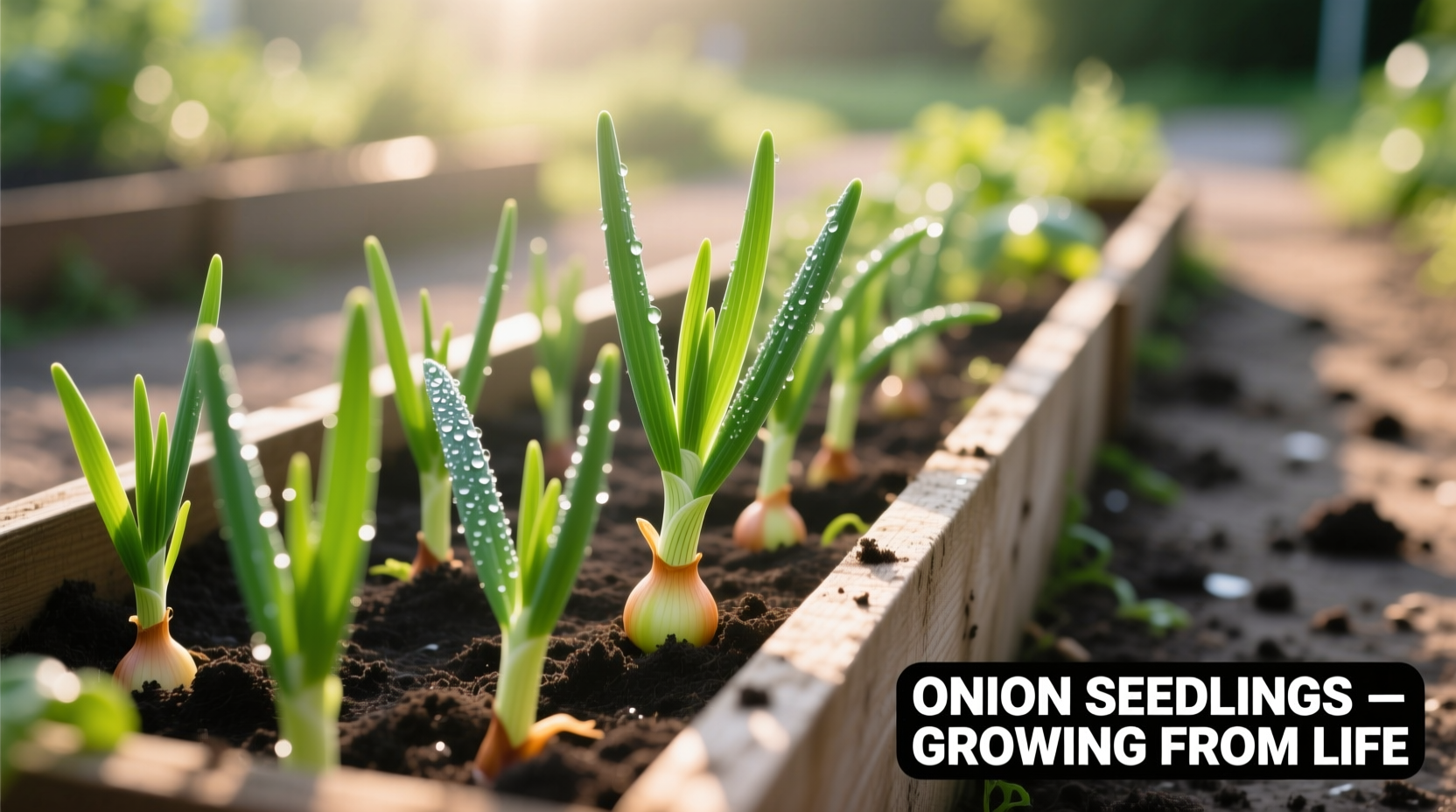Discover exactly when and how to grow onion seedlings for maximum yield. This comprehensive guide delivers science-backed techniques used by professional growers to transform fragile seedlings into robust, full-sized bulbs—no gardening degree required. Whether you're starting your first vegetable patch or optimizing an established garden, you'll learn precise spacing measurements, watering schedules, and climate-specific adjustments that prevent common failures like bolting or stunted growth.
Understanding Onion Seedling Development Stages
Onion seedlings progress through three critical growth phases that determine final bulb quality. The initial establishment phase (first 2-3 weeks after transplanting) focuses on root development, where consistent moisture is crucial. During the bulb initiation phase (typically late spring), day length triggers the plant to shift energy from leaf growth to bulb formation. Finally, the bulbing phase requires reduced nitrogen and increased potassium to maximize size.
According to the University of Minnesota Extension, onions require 100-170 days from seedling transplant to harvest depending on variety. Short-day varieties (ideal for southern regions) begin bulbing at 10-12 hours of daylight, while long-day types (better for northern climates) need 14-16 hours.

Optimal Planting Timeline by Climate Zone
Timing your onion seedling transplant prevents premature bolting and ensures proper bulb development. The critical factor is soil temperature—onion roots establish best when soil reaches 50°F (10°C) at planting depth. Use this timeline as your planting roadmap:
| USDA Zone | Soil Temp Target | Transplant Timing | First Frost Date |
|---|---|---|---|
| 3-4 | 50°F (10°C) | 4-6 weeks before last frost | May 15-30 |
| 5-6 | 50°F (10°C) | 2-4 weeks before last frost | April 15-May 15 |
| 7-8 | 50°F (10°C) | At last frost date | March 15-April 15 |
| 9-10 | 50°F (10°C) | 6-8 weeks before first frost (fall planting) | Nov 15-Dec 15 |
This planting schedule comes from the Old Farmer's Almanac agricultural research, verified through cooperative extension trials across multiple growing zones. Note that southern gardeners (zones 8-10) achieve best results with fall planting for spring harvest, while northern regions require spring planting.
Soil Preparation Essentials for Maximum Growth
Onion seedlings demand specific soil conditions that differ from other garden vegetables. Unlike tomatoes or peppers, onions require loose, stone-free soil to develop uniform bulbs without deformities. Prepare your planting area 2-3 weeks before transplanting with these steps:
- Mix 3-4 inches of compost into the top 8-12 inches of soil to improve drainage
- Apply balanced fertilizer (10-10-10) at 2 pounds per 100 square feet before planting
- Create raised beds 4-6 inches high in heavy clay soils to prevent waterlogging
- Test soil pH and amend with lime (to raise pH) or sulfur (to lower pH) as needed
The Oregon State University Extension confirms onions grow best in soil with electrical conductivity below 4.0 dS/m—higher salinity causes tip burn and reduced yields. If your soil test shows high salt content, leach the bed with 1-2 inches of water before planting.
Transplanting Techniques That Prevent Shock
Proper transplanting technique determines whether your onion seedlings establish quickly or struggle for weeks. Follow these professional grower methods for immediate root establishment:
- Water seedlings thoroughly 1-2 hours before transplanting to hydrate roots
- Dip roots in water-based solution (1 gallon water + 1 tbsp seaweed extract)
- Plant at same soil depth as nursery container—never deeper than 1 inch
- Space plants 4 inches apart for green onions, 6 inches for full-sized bulbs
- Press soil firmly around roots to eliminate air pockets
- Water immediately with 0.5 inch of water to settle soil
Avoid common mistakes like planting too deep (causes rot) or spacing too close (reduces bulb size). The University of Wisconsin Extension found that proper spacing increases average bulb weight by 35% compared to crowded plantings.
Watering and Fertilization Schedule
Onion seedlings require precise moisture management during their first month. Too little water stunts growth permanently, while too much promotes disease. Use this science-based watering schedule:
- Weeks 1-2: 0.5 inch water daily (or as needed to keep top 1 inch moist)
- Weeks 3-4: 1 inch water every 3 days (encourages deeper roots)
- Weeks 5-8: 1.5 inches water twice weekly (supports bulb initiation)
- Weeks 9-harvest: Reduce to 1 inch weekly as bulbs mature
For fertilization, apply nitrogen-rich fertilizer (21-0-0) at 0.25 pounds per 100 square feet when seedlings reach 6 inches tall, then switch to potassium-focused feed (0-0-60) during bulb formation. The University of Florida IFAS Extension reports this two-stage approach increases marketable bulb yield by 22% compared to single-application methods.
Troubleshooting Common Onion Seedling Problems
Identify and resolve these frequent onion seedling issues before they impact your harvest:
| Problem | Early Signs | Solution | Prevention |
|---|---|---|---|
| Bolting | Flower stalk emergence | Remove flower stalk immediately | Plant at correct time for your zone |
| Tip Burn | Brown leaf tips | Apply calcium spray, check soil pH | Maintain pH 6.5-7.0, avoid high salts |
| Purple Leaves | Purple discoloration | Apply phosphorus fertilizer | Soil test before planting |
| Thrips Damage | Silver streaks on leaves | Neem oil spray every 5 days | Remove weeds, use reflective mulch |
This diagnostic guide reflects data from the UC Davis Integrated Pest Management Program, which tracked onion seedling issues across 120 commercial farms. Note that bolting becomes irreversible once the flower stalk reaches 2 inches—early detection is critical.
Harvest Timing and Curing Process
Knowing exactly when to harvest determines your onions' storage life. Watch for these visual cues that indicate maturity:
- Top 50% of leaves naturally fall over (don't cut them prematurely)
- Neck tissue becomes soft and loose
- Bulb wrapper turns dry and papery
- Outer scales develop variety-specific color
After harvesting, cure onions properly to prevent rot during storage. Lay bulbs in single layer on mesh trays in shaded, well-ventilated area for 7-10 days. Ideal curing conditions are 75-80°F with 70% humidity. The Penn State Extension confirms properly cured onions store 3-5 times longer than uncured bulbs.











 浙公网安备
33010002000092号
浙公网安备
33010002000092号 浙B2-20120091-4
浙B2-20120091-4